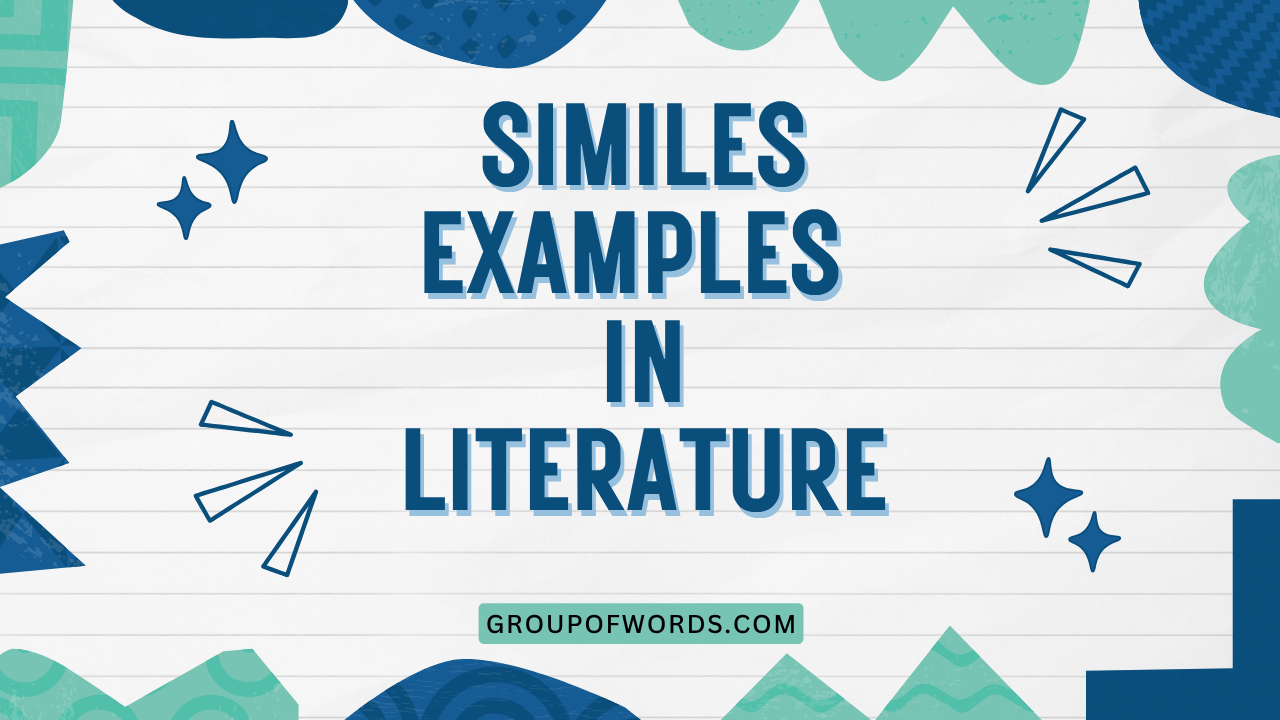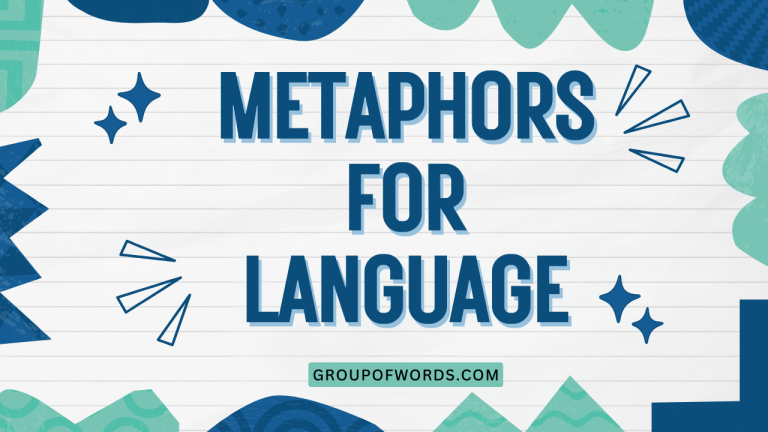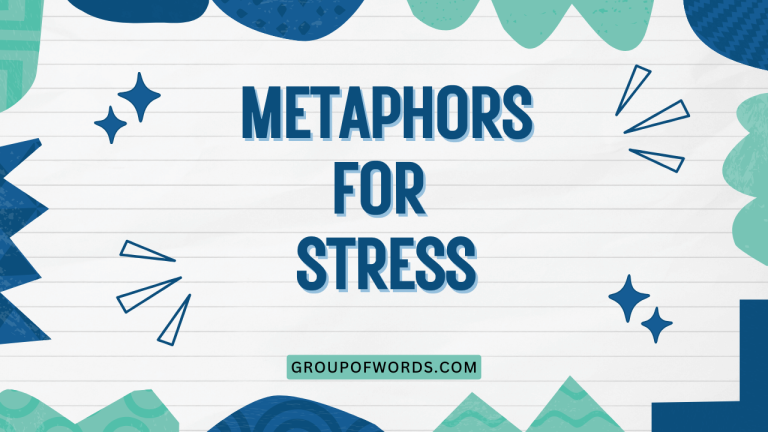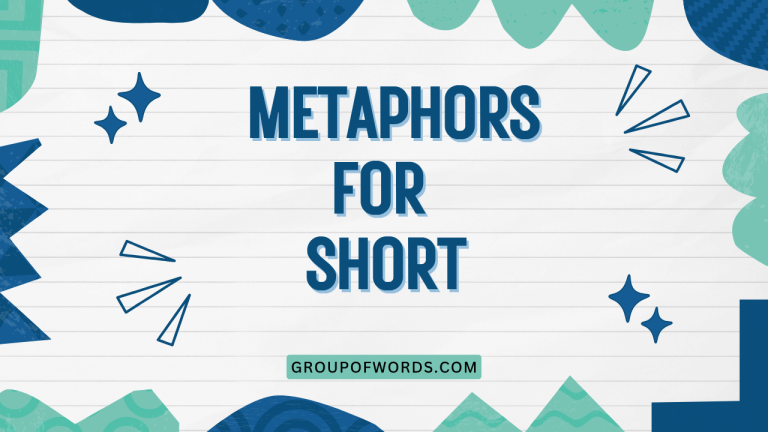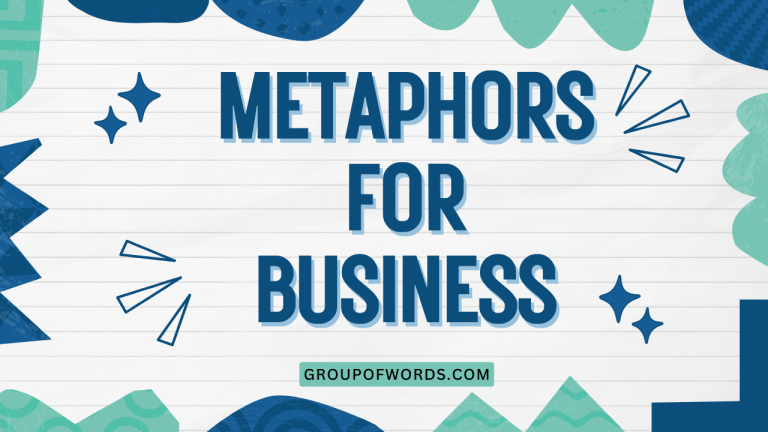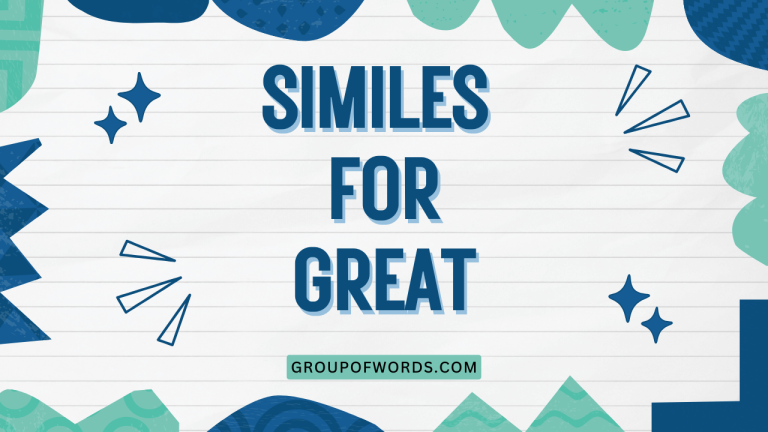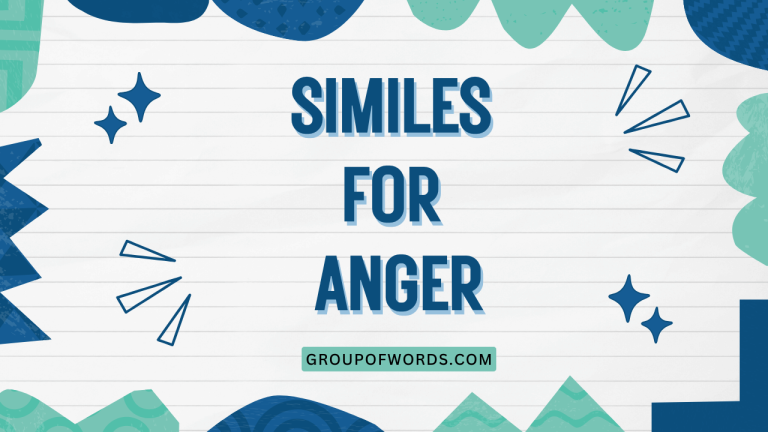Similes in Literature: Definition, Examples, and Usage
Similes are powerful tools in the arsenal of writers and speakers, adding color, depth, and clarity to their expressions. Understanding similes is crucial for anyone looking to improve their comprehension of literature and enhance their own writing skills.
This article provides a comprehensive guide to similes, covering their definition, structure, types, usage rules, common mistakes, and advanced applications. Whether you’re a student, a writer, or simply an English enthusiast, this guide will equip you with the knowledge and skills to master the art of the simile.
Table of Contents
- Definition of Simile
- Structural Breakdown of a Simile
- Types of Similes
- Simile Examples in Literature
- Usage Rules for Similes
- Common Mistakes with Similes
- Practice Exercises
- Advanced Topics in Similes
- Frequently Asked Questions
- Conclusion
Definition of Simile
A simile is a figure of speech that directly compares two different things, explicitly using the words “like” or “as.” The purpose of a simile is to create a vivid image or convey a specific feeling by drawing a connection between the two unlike entities. Similes enhance descriptions, making them more engaging and understandable for the reader or listener.
They are a fundamental element of figurative language and are widely used in literature, poetry, and everyday communication.
The core function of a simile is to illuminate one thing by associating it with another. This comparison highlights a shared quality or characteristic, providing a new perspective on the subject being described.
For example, saying “He is as brave as a lion” doesn’t mean the person literally resembles a lion; rather, it emphasizes their courage by linking it to the well-known bravery associated with lions. This creates a more impactful and memorable image than simply stating “He is brave.”
Similes are often used to simplify complex concepts or emotions. By relating something unfamiliar to something familiar, writers can make their ideas more accessible and relatable to their audience.
This makes similes a valuable tool for both descriptive and explanatory writing. The effectiveness of a simile depends on the clarity and aptness of the comparison.
A well-chosen simile can add depth and nuance to writing, while a poorly chosen one can be confusing or ineffective.
Structural Breakdown of a Simile
A simile consists of three key components: the subject, the linking word (either “like” or “as”), and the object of comparison. The subject is the thing being described, and the object of comparison is the thing it is being compared to. The linking word establishes the direct comparison between the two.
The basic formula for a simile is: Subject + Linking Word + Object of Comparison. Understanding this structure is crucial for both identifying and creating effective similes. Let’s break down each component:
- Subject: This is the noun or pronoun that is being described or compared. It’s the focal point of the simile.
- Linking Word: This is the word that explicitly makes the comparison. The most common linking words are “like” and “as.” Other less common, but still valid, linking words include “than” or “resembles,” although these are often considered less direct and may lean more towards metaphorical comparisons.
- Object of Comparison: This is the noun or pronoun that the subject is being compared to. It should share a common characteristic with the subject to make the comparison meaningful.
For example, in the simile “The snow was like a white blanket,” the subject is “the snow,” the linking word is “like,” and the object of comparison is “a white blanket.” This comparison highlights the shared characteristic of covering or enveloping something in a soft, white layer.
The order of elements in a simile can sometimes be rearranged for stylistic effect, but the core components remain the same. For instance, “As quiet as a mouse, she tiptoed into the room” still maintains the comparison structure, even though the object of comparison (“a mouse”) comes before the subject (“she”).
The key is that the linking word clearly establishes the relationship between the two.
Types of Similes
While all similes share the same basic structure, they can be categorized based on their purpose and the type of comparison they make. Here are some common types of similes:
Descriptive Similes
These similes are used to provide a vivid description of something, focusing on its appearance, sound, smell, taste, or feel. They help the reader visualize or experience the subject more fully.
Explanatory Similes
These similes are used to clarify or explain a complex concept by comparing it to something more familiar. They make abstract ideas more concrete and understandable.
Hyperbolic Similes
These similes use exaggeration to emphasize a particular quality or characteristic. They are often used for humorous or dramatic effect.
Ironic Similes
These similes use comparison to create a sense of irony or sarcasm. The comparison may be unexpected or contradictory, highlighting the difference between appearance and reality.
Extended Similes
These similes are developed over several sentences or even paragraphs, elaborating on the comparison in detail. They provide a more complex and nuanced understanding of the subject.
Simile Examples in Literature
Similes are abundant in literature, adding depth and richness to various texts. Here are some examples categorized by their type, showcasing their diverse applications in different literary works.
Table 1: Descriptive Similes in Literature
This table presents various examples of descriptive similes found in literary works. Each entry includes the simile, its source (the book or author), and a brief explanation of its effect.
| Simile | Source | Explanation |
|---|---|---|
| “The old man was bent over like a question mark.” | The Old Man and the Sea by Ernest Hemingway | Emphasizes the man’s age and weariness through a visual comparison. |
| “The sky looked like a black eye.” | The Catcher in the Rye by J.D. Salinger | Creates a dark and ominous mood, reflecting the protagonist’s emotional state. |
| “Her smile was as bright as the sun.” | Various | Illustrates the warmth and radiance of her smile. |
| “The rain fell like bullets.” | Various | Conveys the intensity and force of the rainfall. |
| “He eats like a pig.” | Various | Describes someone eating in a very messy or greedy way. |
| “The car was as fast as a cheetah.” | Various | Emphasizes the extreme speed of the car. |
| “She sang like an angel.” | Various | Describes the beauty and purity of her singing voice. |
| “The night was as black as ink.” | Various | Illustrates the complete darkness of the night. |
| “The cake was as light as a feather.” | Various | Describes the cake’s airy and delicate texture. |
| “He slept like a log.” | Various | Describes someone sleeping very soundly. |
| “Her skin was as smooth as silk.” | Various | Illustrates the softness and fineness of her skin. |
| “The wind howled like a wolf.” | Various | Conveys the eerie and wild sound of the wind. |
| “The soup was as hot as lava.” | Various | Emphasizes the extreme heat of the soup. |
| “His eyes were like daggers.” | Various | Illustrates the piercing and intense gaze. |
| “The silence was like a thick blanket.” | Various | Describes the heavy and pervasive nature of the silence. |
| “He ran as fast as the wind.” | Various | Illustrates the high speed of the person running. |
| “She was as quiet as a mouse.” | Various | Describes how quiet and stealthy the person was. |
| “The room was as cold as ice.” | Various | Emphasizes the extreme coldness of the room. |
| “His words were as sharp as knives.” | Various | Illustrates how hurtful and cutting his words were. |
| “The city was as busy as a beehive.” | Various | Describes the high level of activity in the city. |
| “The moon was like a silver coin in the sky.” | Various | Provides a visual comparison of the moon’s appearance. |
| “His hair was like spun gold.” | Various | Describes the color and texture of his hair. |
| “The desert was as dry as a bone.” | Various | Emphasizes the extreme aridity of the desert. |
| “Her laughter was like music to his ears.” | Various | Illustrates how pleasing and delightful her laughter was. |
Table 2: Explanatory Similes in Literature
This table features similes that serve to explain or clarify concepts by relating them to something more familiar. This approach is particularly useful in making abstract ideas more accessible.
| Simile | Source | Explanation |
|---|---|---|
| “Life is like a box of chocolates, you never know what you’re gonna get.” | Forrest Gump | Explains the unpredictable nature of life. |
| “The world is like a stage.” | William Shakespeare | Compares the world to a theater, emphasizing the roles people play. |
| “Trying to explain quantum physics to him is like teaching a pig to sing. It wastes your time and annoys the pig.” | Various | Explains the futility of trying to teach or explain something to someone who is incapable of understanding it. |
| “Managing a large project is like conducting an orchestra; each part must work in harmony.” | Various | Illustrates the complexity and coordination required in managing a large project. |
| “Learning a new language is like climbing a mountain; it’s challenging, but rewarding.” | Various | Explains the difficulty and eventual satisfaction of learning a new language. |
| “The internet is like a spiderweb; information is interconnected and easily accessible.” | Various | Illustrates how the internet connects and provides access to information. |
| “A good book is like a garden you can carry in your pocket.” | Chinese Proverb | Explains the enriching and portable nature of a good book. |
| “Investing in the stock market is like gambling; there are risks involved.” | Various | Clarifies the unpredictable and risky nature of stock market investments. |
| “Parenting is like trying to solve a puzzle without all the pieces.” | Various | Explains the challenging and incomplete nature of parenting. |
| “Public speaking is like walking a tightrope; it requires balance and focus.” | Various | Illustrates the need for balance and focus in public speaking. |
| “Friendship is like a glass ornament, once it is broken, it can rarely be put back together exactly the same way.” | Charles Kingsley | Explains how fragile friendship can be. |
| “Planning a wedding is like organizing a military campaign; every detail must be meticulously planned.” | Various | Illustrates the complexity and detailed planning required for a wedding. |
| “Voting is like planting a seed; it may take time to see the results.” | Various | Explains that voting is an action that may take time to yield results. |
| “A mind without books is like a room without windows.” | Heinrich Mann | Explains how books open up the mind to new ideas and perspectives. |
| “A company without marketing is like winking at a girl in the dark. You know what you are doing but nobody else does.” | Steuart Henderson Britt | Explains how marketing is crucial for visibility and recognition. |
| “Teaching is like gardening; you nurture growth but can’t force it.” | Various | Illustrates the supportive but non-coercive nature of teaching. |
| “Writing a novel is like running a marathon; it requires endurance and dedication.” | Various | Explains the long and demanding process of writing a novel. |
| “A computer is like a bicycle for our minds.” | Steve Jobs | Explains how computers amplify and enhance our cognitive abilities. |
| “Forgiveness is like releasing a prisoner and discovering that the prisoner was you.” | Lewis B. Smedes | Explains how forgiveness frees the person forgiving. |
| “Holding onto anger is like grasping a hot coal with the intent of throwing it at someone else; you are the one who gets burned.” | Buddha | Explains how anger harms the person holding it. |
| “Organizing your closet is like going on a treasure hunt; you never know what you might find.” | Various | Explains how organizing your closet can lead to unexpected discoveries. |
| “Effective communication is like building a bridge; it connects people and ideas.” | Various | Illustrates the connecting nature of good communication. |
| “Starting a business is like riding a rollercoaster; it has its ups and downs.” | Various | Explains the volatile and unpredictable nature of starting a business. |
| “Solving a problem is like peeling an onion; it requires layers of analysis.” | Various | Illustrates the multi-layered approach needed to solve a problem. |
Table 3: Hyperbolic Similes in Literature
This table presents examples of hyperbolic similes, which use exaggeration for emphasis, often creating a humorous or dramatic effect. These similes are designed to amplify a particular quality or characteristic.
| Simile | Source | Explanation |
|---|---|---|
| “I’m so hungry I could eat a horse.” | Various | Exaggerates the feeling of hunger. |
| “He’s as big as a house.” | Various | Exaggerates the person’s size. |
| “This bag weighs a ton.” | Various | Exaggerates the weight of the bag. |
| “I’ve told you a million times.” | Various | Exaggerates the number of times something has been said. |
| “She’s as thin as a rail.” | Various | Exaggerates the person’s slimness. |
| “The line was as long as the Nile.” | Various | Exaggerates the length of the line. |
| “He snores like a freight train.” | Various | Exaggerates the loudness of the snoring. |
| “I’m so tired I could sleep for a year.” | Various | Exaggerates the feeling of tiredness. |
| “She cried a river of tears.” | Various | Exaggerates the amount of tears shed. |
| “He’s as stubborn as a mule.” | Various | Exaggerates the person’s stubbornness. |
| “The exam was as hard as rocket science.” | Various | Exaggerates the difficulty of the exam. |
| “He runs like the wind.” | Various | Exaggerates the speed at which someone runs. |
| “She is as nervous as a long-tailed cat in a room full of rocking chairs.” | Various | Exaggerates the feeling of nervousness. |
| “They have more money than Croesus.” | Various | Exaggerates the amount of money someone possesses. |
| “I haven’t seen you in ages.” | Various | Exaggerates the length of time since seeing someone. |
| “The crowd was as thick as thieves.” | Various | Exaggerates the density of the crowd. |
| “He’s older than the hills.” | Various | Exaggerates the person’s age. |
| “The noise was deafening.” | Various | Exaggerates the loudness of the noise. |
| “The task was as easy as pie.” | Various | Understates how simple the task was. |
| “I’m so full I could burst.” | Various | Exaggerates the feeling of fullness. |
| “Her beauty could launch a thousand ships.” | Christopher Marlowe | Exaggerates the person’s beauty. |
| “He’s as slow as molasses in January.” | Various | Exaggerates the person’s slowness. |
| “I laughed my head off.” | Various | Exaggerates the action of laughing. |
| “The traffic was bumper to bumper for miles.” | Various | Exaggerates the extent of the traffic. |
Usage Rules for Similes
Using similes effectively involves understanding certain rules and guidelines. Here are some key points to consider:
- Clarity: The comparison should be clear and easily understood by the audience. Avoid obscure or overly complex comparisons.
- Relevance: The object of comparison should share a relevant characteristic with the subject. The comparison should make sense and add meaning to the description.
- Originality: While common similes can be effective, strive for originality to make your writing more engaging and memorable. Avoid clichés whenever possible.
- Context: The appropriateness of a simile depends on the context of the writing. Consider the tone, audience, and purpose of the piece when choosing a simile.
- Consistency: Ensure that the simile is consistent with the overall style and tone of the writing. Avoid using similes that clash with the rest of the text.
It’s also important to avoid mixing metaphors and similes. While both are figures of speech that make comparisons, they function differently.
A simile states a comparison directly (using “like” or “as”), while a metaphor implies a comparison without using those words. Mixing them can lead to confusing or nonsensical writing.
Common Mistakes with Similes
Even with a good understanding of similes, it’s easy to make mistakes. Here are some common errors to watch out for:
Using Clichés
Clichés are overused similes that have lost their impact. Examples include “as blind as a bat,” “as strong as an ox,” and “as quiet as a mouse.” While these may be easily understood, they lack originality and can make your writing seem uninspired. Instead of using clichés, try to create your own similes that are fresh and unique.
Correct: The athlete was as fast as a speeding bullet.
Incorrect (Cliché): The athlete was as fast as lightning.
Inaccurate Comparisons
The object of comparison should share a clear and relevant characteristic with the subject. If the comparison is illogical or nonsensical, it will confuse the reader. Ensure that the connection between the two things is clear and meaningful.
Correct: The idea was as clear as a bell.
Incorrect: The idea was as clear as mud.
Overusing Similes
While similes can enhance your writing, using too many can make it seem forced or unnatural. Use similes sparingly and only when they add significant value to the description. A well-placed simile can be powerful, but too many can dilute their impact.
Mixing Similes and Metaphors
Similes and metaphors are similar but distinct figures of speech. Mixing them in a single sentence can create confusion. Keep your comparisons consistent and avoid blending similes and metaphors.
Correct (Simile): The city was like a jungle.
Correct (Metaphor): The city was a jungle.
Incorrect (Mixed): The city was like a jungle teeming with life.
Using Incorrect Linking Words
Similes require the use of specific linking words, primarily “like” and “as.” Using other words can weaken the comparison or turn it into something else. Stick to “like” and “as” for direct comparisons.
Correct: He was as tall as a tree.
Incorrect: He was taller than a tree.
Practice Exercises
Test your understanding of similes with these practice exercises. Each exercise includes multiple questions to help you sharpen your skills.
Exercise 1: Identifying Similes
Identify the similes in the following sentences.
| Question | Answer |
|---|---|
| 1. Her voice was as smooth as silk. | as smooth as silk |
| 2. The car sped down the highway. | No simile |
| 3. He fought like a lion. | like a lion |
| 4. The moon was a ghostly galleon. | No simile (metaphor) |
| 5. She was as happy as a clam. | as happy as a clam |
| 6. The news hit him like a ton of bricks. | like a ton of bricks |
| 7. The water was cold. | No simile |
| 8. His explanation was as clear as mud. | as clear as mud |
| 9. The child slept soundly. | No simile |
| 10. The stadium erupted like a volcano. | like a volcano |
Exercise 2: Completing Similes
Complete the following similes with an appropriate object of comparison.
| Question | Answer |
|---|---|
| 1. The night was as dark as __________. | ink |
| 2. He ran as fast as __________. | the wind |
| 3. She was as quiet as __________. | a mouse |
| 4. The soup was as hot as __________. | lava |
| 5. His words were as sharp as __________. | knives |
| 6. The city was as busy as __________. | a beehive |
| 7. The moon was like __________. | a silver coin |
| 8. His hair was like __________. | spun gold |
| 9. The desert was as dry as __________. | a bone |
| 10. Her laughter was like __________ to his ears. | music |
Exercise 3: Creating Similes
Create your own similes for the following subjects.
| Subject | Possible Answer |
|---|---|
| 1. The ocean | The ocean was like a restless giant. |
| 2. A crowded street | The street was as packed as a can of sardines. |
| 3. A starry night | The stars were like diamonds scattered across the sky. |
| 4. A gentle breeze | The breeze was as soft as a whisper. |
| 5. A challenging task | The task was like climbing a mountain. |
| 6. A peaceful garden | The garden was as serene as a temple. |
| 7. A sudden storm | The storm was like an angry beast unleashed. |
| 8. A child’s laughter | The laughter was as bright as sunshine. |
| 9. A deep secret | The secret was like a heavy stone in his heart. |
| 10. A warm embrace | The embrace was as comforting as a warm blanket. |
Advanced Topics in Similes
For advanced learners, understanding the nuances and subtleties of similes can further enhance their writing and analytical skills. Here are some advanced topics to explore:
Subverting Expectations
Instead of using predictable comparisons, try subverting expectations by creating unexpected or unconventional similes. This can add a layer of complexity and intrigue to your writing.
For example, instead of saying “He was as brave as a lion,” you could say “He was as brave as a librarian facing down a noisy crowd.”
Similes and Tone
The choice of simile can significantly impact the tone of your writing. A humorous simile can lighten the mood, while a somber simile can create a sense of gravity.
Pay attention to the emotional effect of your similes and choose them accordingly.
Cultural Context
Similes are often influenced by cultural context. A simile that is effective in one culture may not resonate in another.
Be mindful of cultural differences when using similes, especially when writing for a diverse audience.
Similes in Different Genres
Similes are used differently in various genres of writing. In poetry, they are often used for their aesthetic qualities, while in scientific writing, they are used for clarity and explanation.
Understanding the conventions of different genres can help you use similes more effectively.
Frequently Asked Questions
Here are some frequently asked questions about similes:
- What is the difference between a simile and a metaphor?
A simile is a direct comparison using “like” or “as,” while a metaphor is an implied comparison without using those words. For example, “He is like a lion” is a simile, while “He is a lion” is a metaphor.
- Can a simile be longer than one sentence?
Yes, an extended simile can be developed over several sentences or even paragraphs. This allows for a more detailed and nuanced comparison.
- What are some common mistakes to avoid when using similes?
Common mistakes include using clichés, making inaccurate comparisons, overusing similes, and mixing similes and metaphors.
- How can I create more original similes?
To create original similes, think outside the box and look for unexpected connections between things. Avoid clichés and strive for comparisons that are fresh and unique.
- Are similes only used in literature?
No, similes are used in various forms of communication, including everyday conversation, speeches, and advertising. They are a versatile tool for enhancing description and explanation.
- Why are similes important in writing?
Similes add depth, clarity, and color to writing. They help readers visualize and understand concepts more effectively, making the writing more engaging and memorable.
- How do I know if a simile is effective?
An effective simile is clear, relevant, and original. It should enhance the description and add meaning to the writing without being confusing or forced.
- Can similes be used in formal writing?
Yes, similes can be used in formal writing, but they should be chosen carefully and used sparingly. The goal is to enhance clarity and understanding without sacrificing the formal tone.
Conclusion
Similes are a powerful tool for enhancing communication, adding depth and clarity to both writing and speech. By understanding their structure, types, and usage rules, you can effectively incorporate similes into your own expressions and appreciate their use in literature.
Avoiding common mistakes and striving for originality will further refine your skills in using this versatile figure of speech.
Mastering similes requires practice and attention to detail. Continue to explore examples in literature, experiment with creating your own similes, and refine your understanding of their impact on tone and meaning.
With consistent effort, you can unlock the full potential of similes and elevate your writing to new heights. Remember, the key is to make meaningful and vivid comparisons that resonate with your audience.
